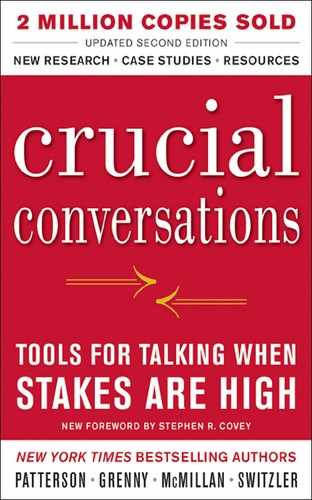How Did We Get Like This?
It starts with a story. When we feel the need to push our ideas on others, it’s generally because we believe we’re right and everyone else is wrong. There’s no need to expand the pool of meaning, because we own the pool. We also firmly believe it’s our duty to fight for the truth that we’re holding. It’s the honorable thing to do. It’s what people of character do.
Of course, others aren’t exactly villains in this story. They simply don’t know any better. We, on the other hand, are modern-day heroes crusading against naiveté and tunnel vision.
We feel justified in using dirty tricks. Once we’re convinced that it’s our duty to fight for the truth, we start pulling out the big guns. We use debating tricks that we’ve picked up throughout the years. Chief among them is the ability to “stack the deck.” We cite information that supports our ideas while hiding or discrediting anything that doesn’t. Then we spice things up with exaggeration: “Everyone knows that this is the only way to go.” When this doesn’t work, we lace our language with inflammatory terms: “All right-thinking people would agree with me.”
From there we employ any number of dirty tricks. We appeal to authority: “Well, that’s what the boss thinks.” We attack the person: “You’re not so naive as to actually believe that?” We draw hasty generalizations: “If it happened in our overseas operation, it’ll happen here for sure.” We attack a straw man: “Sure we can follow your plan—if we want to offend our top customers and lose the business.”
And again, the harder we try and the more forceful and nasty our tactics, the greater the resistance we create, the worse the results, and the more battered our relationships.
How Do We Change?
The solution to employing excessive advocacy is actually rather simple—if you can just bring yourself to do it. When you find yourself just dying to convince others that your way is best, back off your current attack and think about what you really want for yourself, others, and the relationship. Then ask yourself, “How would I behave if these were the results I really wanted?” When your adrenaline level gets below the 0.05 legal limit, you’ll be able to use your STATE skills.
First, Learn to Look. Watch for the moment when people start to resist you—perhaps they begin to raise their volume and/or overstate the facts behind their views in reaction to your tactics—or perhaps they retreat into silence. Turn your attention away from the topic (no matter how important) and onto yourself. Are you leaning forward? Are you speaking more loudly? Are you starting to try to win? Are you speaking in lengthy monologues and using dirty tricks? Remember: The more you care about an issue, the less likely you are to be on your best behavior.
Second, tone down your approach. Open yourself up to the belief that others might have something to say, and better still, they might even hold a piece of the puzzle—and then ask them for their views.
Of course, this isn’t easy. Backing off when we care the most is so counterintuitive that most of us have trouble doing so. It’s not easy to soften your language when you’re positive about something. And who wants to ask for other views when you know they’re wrong? That’s positively nuts.
In fact, it can feel disingenuous to be tentative when your own strong belief is being brought into question. Of course, when you watch others shift from healthy dialogue to forcing their way on others, it’s obvious that if they don’t back off, nobody will buy in. That’s when you’re watching others. On the other hand, when we ourselves are pushing hard, it’s the correct thing to do. Right?
Let’s face it. When it comes to our strongest views, passion can be our enemy. Of course, feeling strongly about something isn’t bad in and of itself. It’s okay to have strong opinions. The problem comes when we try to express them.
For instance, when we believe strongly in a concept or a cause, our emotions kick in and we start trying to force our way onto others. As our emotions kick in, our ideas no longer flow smoothly and gently into the pool. Instead, our thoughts shoot out of our mouths like water out of a raging fire hydrant. And guess what? Others become defensive. When this happens, when our emotions turn our ideas into a harsh and painful stream of thoughts, our honest passion kills the argument rather than supports it.
Catch yourself. So what’s a person to do? Catch yourself before you launch into a monologue. Realize that if you’re starting to feel indignant or if you can’t figure out why others don’t buy in—after all, it’s so obvious to you—recognize that you’re starting to enter dangerous territory.
Back off your harsh and conclusive language. But don’t back off your belief. Hold to your belief; merely soften your approach.
SUMMARY—STATE MY PATH
When you have a tough message to share, or when you are so convinced of your own rightness that you may push too hard, remember to STATE your path:
• Share your facts. Start with the least controversial, most persuasive elements from your Path to Action.
• Tell your story. Explain what you’re beginning to conclude.
• Ask for others’ paths. Encourage others to share both their facts and their stories.
• Talk tentatively. State your story as a story—don’t disguise it as a fact.
• Encourage testing. Make it safe for others to express differing or even opposing views.
